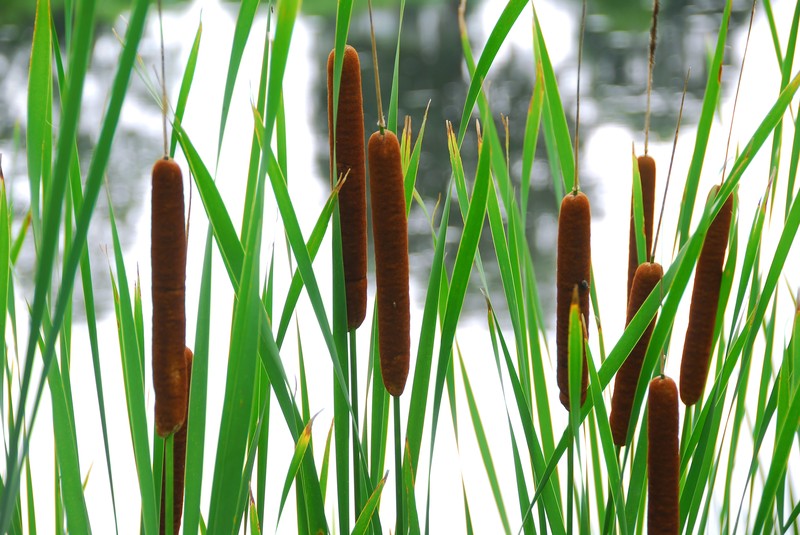There was a time when nearly every settler knew almost every wild plant and which ones they could make use of for food. Nowadays much of that knowledge is gone, and if we wanted to have some greens in our diet in a survival situation, we'd pretty much have to guess what plants we could eat.
To help you out, here are 8 surprising edible plants you may not have known about.
Amaranth (Amaranthus retroflexus and other species)
Native to the Americas but found on most continents, amaranth is an edible weed. You can eat all parts of the plant, but be on the look out for spines that appear on some of the leaves. While not poisonous, amaranth leaves do contain oxalic acid and may contain large amounts of nitrates if grown in nitrate-rich soil. It’s recommended that you boil the leaves to remove the oxalic acid and nitrates. Don’t drink the water after you boil the plant. With that said, you can eat the plant raw if worse comes to worst.
Cattail (Typha)
Known as cattails or punks in North America and bullrush and reedmace in England, the typha genus of plants is usually found near the edges of freshwater wetlands. Cattails were a staple in the diet of many Native American tribes. Most of a cattail is edible. You can boil or eat raw the rootstock, or rhizomes, of the plant. The rootstock is usually found underground. Make sure to wash off all the mud. The best part of the stem is near the bottom where the plant is mainly white. Either boil or eat the stem raw. Boil the leaves like you would spinach. The corn dog-looking female flower spike can be broken off and eaten like corn on the cob in the early summer when the plant is first developing. It actually has a corn-like taste to it.
Clovers (Trifolium)
Lucky you — clovers are actually edible. And they’re found just about everywhere there’s an open grassy area. You can spot them by their distinctive trefoil leaflets. You can eat clovers raw, but they taste better boiled.
Field Pennycress (Thalspi vulgaris)
Field pennycress is a weed found in most parts of the world. Its growing season is early spring to late winter. You can eat the seeds and leaves of field pennycress raw or boiled. The only caveat with field pennycress is not to eat it if it’s growing in contaminated soil. Pennycress is a hyperaccumulator of minerals, meaning it sucks up any and all minerals around it. General rule is don’t eat pennycress if it’s growing by the side of the road or is near a Superfund site.
Fireweed (Epilobium angustifolium)
This pretty little plant is found primarily in the Northern Hemisphere. You can identify fireweed by its purple flower and the unique structure of the leaves’ veins; the veins are circular rather than terminating on the edges of the leaves. Several Native American tribes included fireweed in their diet. It’s best eaten young when the leaves are tender. Mature fireweed plants have tough and bitter tasting leaves. You can eat the stalk of the plant as well. The flowers and seeds have a peppery taste. Fireweed is a great source of vitamins A and C.
Purslane (Portulaca oleracea)
While considered an obnoxious weed in the United States, purslane can provide much needed vitamins and minerals in a wilderness survival situation. Ghandi actually numbered purslane among his favorite foods. It’s a small plant with smooth fat leaves that have a refreshingly sour taste. Purslane grows from the beginning of summer to the start of fall. You can eat purslane raw or boiled. If you’d like to remove the sour taste, boil the leaves before eating.
Sheep Sorrel (Rumex acetosella)
Sheep sorrel is native to Europe and Asia but has been naturalized in North America. It’s a common weed in fields, grasslands, and woodlands. It flourishes in highly acidic soil. Sheep sorrel has a tall, reddish stem and can reach heights of 18 inches. Sheep sorrel contains oxalates and shouldn’t be eaten in large quantities. You can eat the leaves raw. They have a nice tart, almost lemony flavor.
Wood Sorrel (Oxalis)
You’ll find wood sorrel in all parts of the world; species diversity is particularly rich in South America. Humans have used wood sorrel for food and medicine for millennia. The Kiowa Indians chewed on wood sorrel to alleviate thirst, and the Cherokee ate the plant to cure mouth sores. The leaves are a great source of vitamin C. The roots of the wood sorrel can be boiled. They’re starchy and taste a bit like a potato.
Knowing these plants is just the tip of the iceberg. There are countless books on the topic, and if you haven't already added them to your survival library, we highly encourage you to pick some up as soon as possible. If you plan on practicing your foraging skills, make sure you do so away from fertilized areas and places with runoff from farms or factories. These plants won't make you sick, but E. Coli and heavy metal poisoning sure will.
This is some excellent advice for the aspiring forager. For more great edible plants, take a look at the original article at Art of Manliness.

Brenden Robson
Ryan Oberst. Here you
Go brother
Foot hold traps is where it’s at No Vegan Rabbit Food??Meat Has More Protein that 1,000 Flowers Combine!!!
Forgot Dandelions
This is good information I would suggest for those that don’t know what the plants look like some pictures
Heidi Mize. Caleb needs to see this
Didn’t know corndogs grew on plants. Now, where is the mustard plant.
Put pictures up next time!